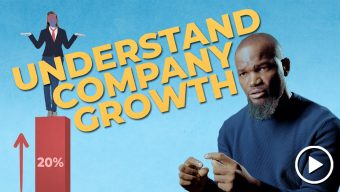“Okay, see you next year” was the response of a famous CEO who was about to join a company’s Board of Directors after they explained that new members were not expected to say anything for the first 12 months. That was simply how things worked. Obviously, they never called him back and he never got the job on the board. This is not an efficient way to run a Board of Directors and is possibly a figurative sin.
Based on an analysis of 5,000 responses from more than 100 board members of organizations of varying size, and taking into consideration my own experience of board membership, I have found that there are seven stages of a board member’s journey from the time they join a board until they are paid for their services: on-boarding, board agenda, trust, board dynamics, strategy, shareholders versus stakeholders, and remuneration. Each of these stages bring on one of the seven deadly sins. Let’s consider three of those stages, their accompanying sins, and how to stay on the road to redemption and efficiency in the boardroom.
TRUST: The sin of assuming trust
While board members have in-depth knowledge of their sector, there is still a lack of trust among them at board meetings. This is likely due to the highly formal and stilted atmosphere of those meetings, which prevents trust and relationships from being established. Therefore, it is the informal interactions that take place amongst board members – at dinners and lunches, for example, during off-site activities and calls between members – that enable them to build trust and in this way tackle specific and pressing issues.
There can be too much of a good thing, however. This informality must also be treated with caution. Rules should be established to steer informal conversations so that they are beneficial to the board as a whole. One way to embed some formality into the informal is to continue with the writing of reports and compile the contents of conversations held outside the board room. This tactic is especially useful for the Chairman of the Board and the CEO, as they hold multiple, simultaneous conversations with different board members and it is not easy to remember everything discussed with each one of them. Furthermore, these reports can serve as a record of how members may have shifted their thinking over the course of time and thus help explain how and why a member may have changed their mind on a particular issue. This is, in fact, crucial, because it reduces the perception of insincerity.
A lack of trust has real consequences for whether a comfortable atmosphere can be achieved, one that is suitable for discussion and teamwork. The board members are essentially a team and must feel confident in the sharing of sensitive information and major concerns. This gives rise to a virtuous circle in which trust acts as the core ingredient. The crucial link in this virtuous circle is probably the ability to question the assumptions and beliefs of others. Respect and trust do not imply submission, infinite kindness, or a lack of disagreement. Quite the opposite, they represent a bond between board members that is strong enough to accommodate dissenting viewpoints and challenging questions. It is quite surprising how prevalent groupthink is in boardrooms. In almost all cases, board members are intelligent, experienced, and comfortable with their position of power – yet when placed in a group that discourages dissent, they often simply toe the line, and those who do not often end up leaving the board or are “invited to leave”.
Furthermore, it is essential that the CEO of the company build trust with directors by sharing appropriate information in a timely manner, enabling them to adequately analyze and understand the company’s situation. In addition, directors should be able to express their opinion through an anonymous survey about how comfortable they are with the authority exerted by the CEO and/or Chairman of the Board.
To avoid the sin of assuming the board is full of trust, ask the following questions:
- What organizational processes are in place to build trust among board members, and between them and the management team?
- What systems does the board have to identify and measure trust amongst themselves? Who oversees these processes, their results, and their use by the board members?
- Are there internal processes that ensure the board receives timely, appropriate information before meetings?
BOARD DYNAMICS: The sin of assuming diversity and inclusion
The active participation in board meetings is key to the success of the company. It is the duty of the Chairman of the Board to create an environment in which everyone can express their opinions, especially when they differ from the group – and everyone must be given the same chance to freely express themselves.
This inclusive approach is particularly pertinent when it comes to diversity. It’s important to note that a diverse board in terms of gender, age, race, ethnicity, background and experience is not enough. Diversity of thought is also essential, and the right conditions must be created so that all participants are free to contribute and have their opinion valued equally.
In addition, people representing minorities on boards should have the opportunity to express their opinions on issues that affect them directly. For example, if there is someone on the board who belongs to the LGTBI community, special discussion may be needed if this could influence the day-to-day functioning of the board. If there are members who are uncomfortable with another person’s sexual identity, the Chairman has a duty to take steps to prevent situations that could negatively affect trust between participants.
To avoid the sin of assuming the board is inclusive and diverse, ask the following questions:
- Are there processes in place that allow for each member to be valued equally?
- How does the board balance “short term” vs “long term” goals?
- Is there a transparent way managers can share concerns with board members before, during, and after board meetings?
STRATEGY: The sin of assuming there has been enough discussion
Strategy, by its very nature, is linked to a company’s long-term vision. It is commonly assumed that regular board meetings discuss the company’s strategic planning at length. This is, after all, one of the board’s main tasks. However, in our recent study, Antonio Nuñez of Parangon Partners, and I found that strategic planning is actually discussed less, and in less detail, than board members feel necessary. Our findings show that board members would like more information about the company’s strategy.
There is an extremely fine line between constructive board encouragement of the management team, led by the CEO, and unacceptable meddling in strategy – so finding the right balance is no easy task. To what extent should the CEO and executives listen to the board? How much influence should the board have in shaping corporate strategy? Is it the board’s responsibility to encourage discussion of the plan presented by the CEO and their management team, or should the board be the one to define that plan? Is it the board’s job to identify key issues and let the management team develop its own plan based on these strategic guidelines?
Strategy, by its very nature, is linked to a company’s long-term vision. Despite this, it is striking to find that 22% of board members feel that there is a lack of clarity on the time horizon of the issues being discussed on the board. This gets the meeting off to a bad start if this is not clear. Part of the problem related to the “time factor” may lie in the answer to whether executives are fully transparent with board members about their strategic concerns. A total of 36.6% stated that they disagreed or strongly disagreed with that statement. It is more worrying than previously thought if about one in three do not feel comfortable sharing these types of topics.
The difficulties encountered by members in addressing these issues are frequent. In fact, when asked what issues were regularly discussed at the board but were never resolved or poorly resolved, 21.5% of the responses were related to strategy. This indicates that addressing the latter and discussing critical issues is a problem for this group.
When asked what they would like to know or what they need to know as board members, directors emphasized the need for more information about the company’s strategy. In fact, 14% of respondents made reference to this issue, suggesting that they feel they lack sufficient insight into this aspect of the company.
In the realm of corporate strategy, finding the right balance between the roles played by the board and the management team is a challenge. There is an extremely fine line between constructive board encouragement of the management team, led by the CEO, and unacceptable meddling in strategy. To what extent should the CEO and executives listen to the board? How much influence should the board have in shaping corporate strategy? Is it the board’s responsibility to encourage discussion of the plan presented by the CEO and their management team, or should the board be the one to define that plan? Is it the board’s job to identify key issues
According to David A. Nadler of Columbia Business School, there are five different board types, which can influence, in one way or another, the implementation of a strategic plan:
- Passive Board. This is the traditional model. The board’s activity and participation are minimal. Basically, the board’s job is to ratify the decisions made by the CEO as the head of the company.
- Certifying Board. This model emphasizes credibility to shareholders. It oversees the CEO to make sure the business is managed properly and takes the necessary measures if something does not go well. It also ensures that there are outside directors and that there is an orderly succession process.
- Engaged Board. Here, the board serves as a partner to the CEO and his team. It provides insight, advice, and support on key decisions and is responsible for overseeing CEO and company performance. The board has substantive discussions of key issues and actively defines its role and boundaries, seeking industry and financial knowledge to make informed decisions.
- Intervening Board. In this model, the board is deeply involved in making key decisions. There are frequent, intense meetings to discuss and decide on important issues.
- Operating Board. This is the deepest level of board involvement. The board makes important decisions that management then implements. This model is common in early-stage start-ups whose senior executives may have specialized expertise but lack broad management experience.
To avoid the sin of assuming the board devotes sufficient attention to defining and monitoring strategy:
- What conditions are needed so that enough time and attention is given to discussion around the company strategy?
- What model is the board operating as and is this the appropriate model for the company’s culture, strategy, and goals? Is the board’s performance properly assessed?
- Do strategy meetings focus enough attention on customers and competitors?
A board of directors that is operating smoothly and at the height of its capacity is key to the success of a company. The above questions can help board members anticipate and mitigate potential conflicts that impede board efficiency. Some are more simple to address than others but the main value in asking them is that they can help develop our capacity to address preconceived ideas and assumptions. By questioning the status quo, we can imagine new ideas and approaches to make boards more effective and boost good corporate governance.
© IE Insights.











